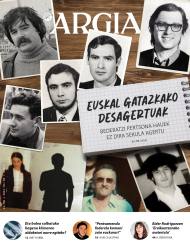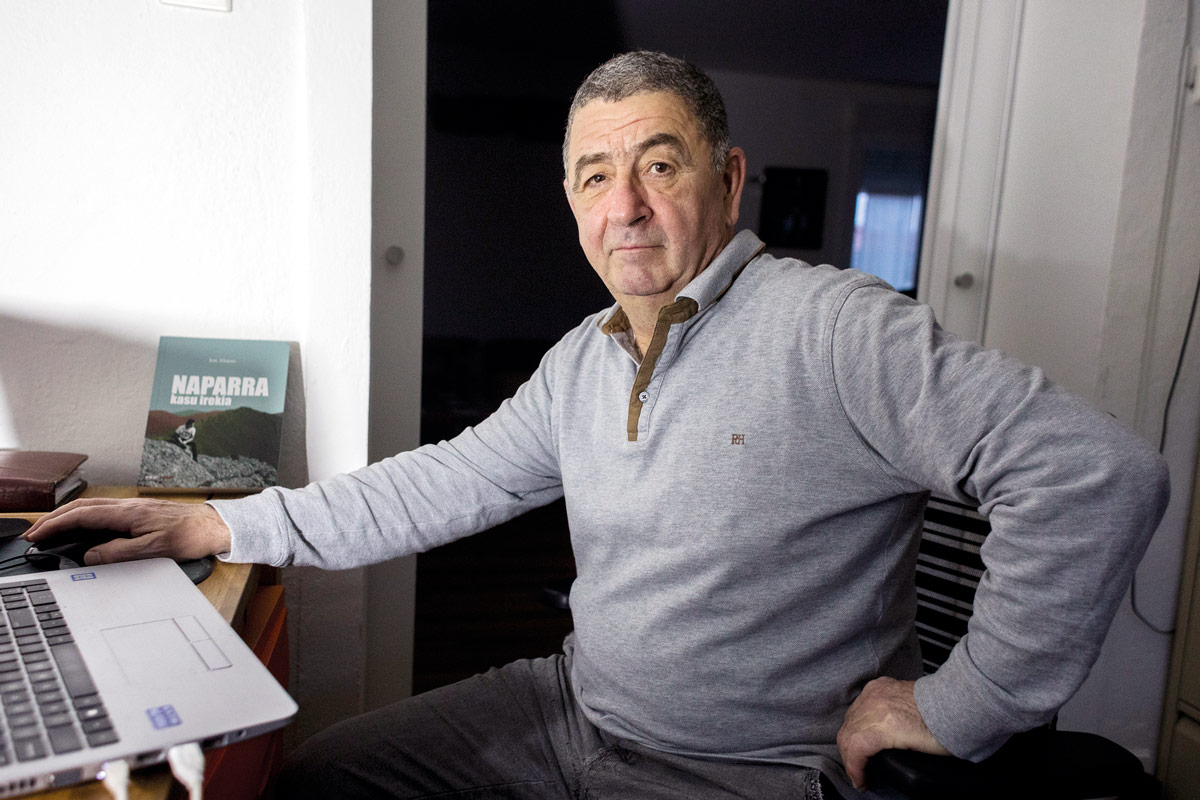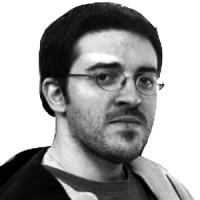Still missing
- Lost items just written by Iñaki Egaña. Enforced disappearances in the Basque context (1956-2010) (Lost objects. Report based on the book Forced disappearances in the Basque context, 1956-2010 (Txalaparta, 2021). There has been talk of murders or kidnappings of ETA, of murders and torture of para-police groups or security forces, but they have disappeared much less, and this book adds a copy to the story of this thorny issue. A good opportunity to bring to light the conflicts of forced missing persons.
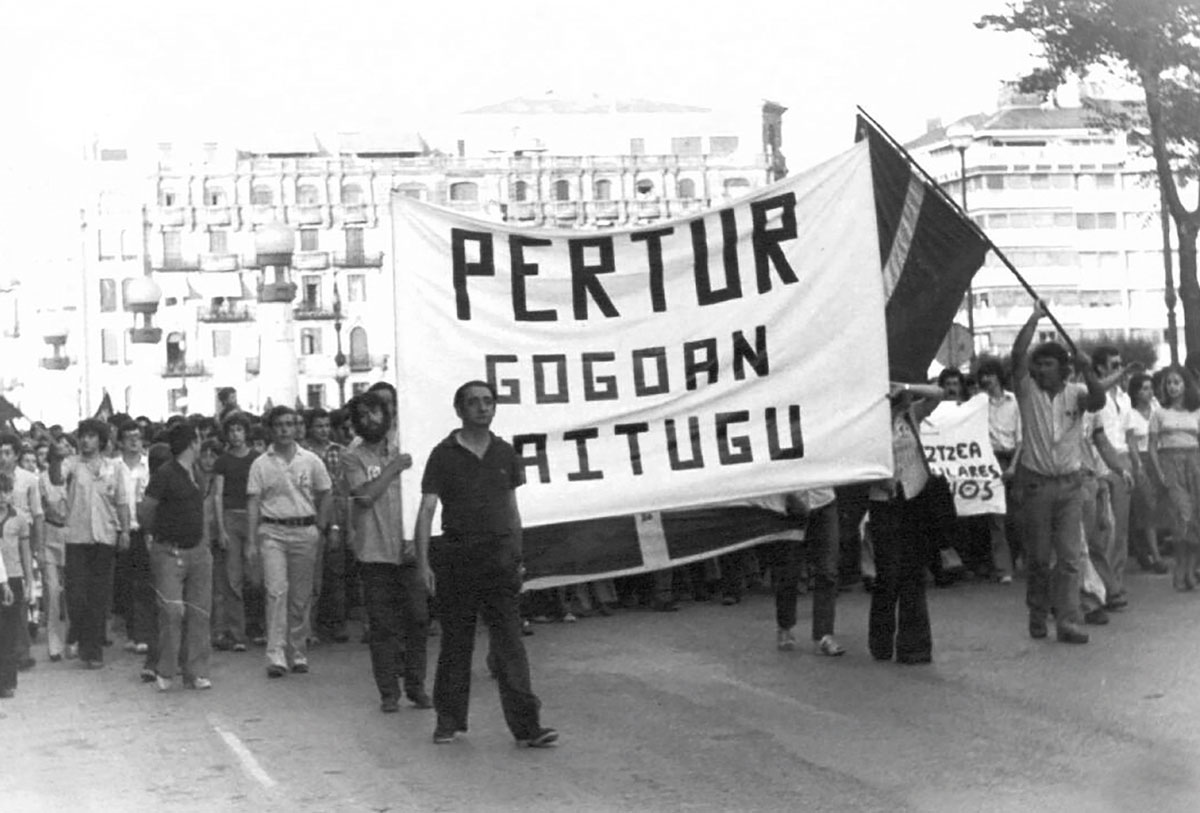
The publication of Iñaki Egaña offers information for those who want to have an overview of the extinctions of force around the Basque conflict. However, the first contradiction between the pages has come to light as soon as you enter the book: between the disappearances of a Basque conflict in memory and the 24 disappearances that are analyzed in the book with a level of depth there is a very large leap. He has also written about the disappearances of nine other Basques around the world. And after writing the book, they report three more cases.
Some cases are known, others are not, but in most cases they are innovations, at least for those who are not well above research, and offer a world for those who know little about them. But why now? “I’ve been investigating the missing from the Civil War for the past 20 years, so the step has seemed natural to me, I’m an age and I had a lot of data about the missing. What to store for? What I know is better in a book. That’s why it’s a mixture of several issues.”
In particular, the book is divided into three large blocks. In a first group eleven have disappeared: Jesús Galindez, Pedro Baigorri, José Humberto, Jorge Juan García, Fernando Quiroga, Annie Intxauspe and Patrick Ly, Eduardo Moreno Pertur, Tomás Hernández, José Miguel Etxeberria Naparra and Jean Louis Larre Popo.
In the second group there are the cases of twelve citizens, who at some point were missing, supposedly missing, but eventually cadavers appeared, some three or four days, a month, a year... or twelve years – like Joxi Zabala and Joxean Lasa –: Jesús María González Tuitero and José Luis Tapipxi, José Bidiza, José
The two previous blocks are not distinguished in this way in the book and are differentiated by the author of the report to inform the reader of these lines of disappearances in more detail. The third group is the one proposed by the author of the book, in the chapter Other disappearances, in the belief that these are violent extinctions of the Basques on Basque lands or in the world. These are nine cases of a very different nature: Borja Lazaro, Sabin Llona, Miguel Angel Martínez, Hodei Egiluz, Fidel Equiza, José Ramón Canal, Valentín Parras, Antonio Varona and Ignacio Zurbano.
And there's one last case, well known in the history of the Basque conflict, because it's been ETA's most famous topo: Mikel Lejarza El Lobo “This too?” anyone who knows his story a little bit can think with surprise. According to Egaña, he also had doubts to enter, and in the end he has thought that there are those who think that when El Lobo was arrested in the 1970s, he was tortured, forced to collaborate with the police and eliminated. According to Egaña in his book, this is the hypothesis of Xabier Makazaga, who investigates dirty war and torture. However, he believes that, in general, it is the most widespread belief, The Wolf would be alive and would be about 70 years old. In the interview he tells us that he also has testimonies of the place where he lives.
On the three new cases that do not appear in the book, Egaña explains that one is Andrés Lanz Andueza, of Lakuntza. He was a priest, he went to Guatelamala, and in 1980 he started his guerrillas. He was arrested, tortured in 1982 and, as at that time was very common in South America, he was thrown into the Caribbean Sea from an airplane. The other two missing have not given us the names because they are still investigating, but Egaña advances us that they disappeared in the 1980s when the Civil Guard was conducting an operation against ETA at or near the border.

The perpetrators of the
disappearances Nine of the eleven missing persons are in the context of the Basque conflict, but it is not clear who made them disappear. In most cases it is believed that behind are the sewers of the Spanish State, but in some of them there is also the shadow of ETA or its surroundings, and more than the shadow in the question of the three Galicians discussed below.
Naparra, Pertur and Popo Larre are the best known cases. In the first two cases the main hypothesis is that of the dirty war of the Spanish Government, but still many still believe that ETA made them disappear. He gives more credibility to the dirty war and clearly explains why. In the case of Naparra, the writer Jon Alonso, who investigated the issue in the book Naparra open case, is of the same opinion. As for the investigation, Arnau de la Nuez, allegedly pulled by the former Spanish secret agent, in 2017 several explorations were carried out in the Mont-de-Marsan de Landeta, but they had no results. The family then asked for another area in which it is located to be explored, and the National Hearing addressed the petition to French Justice, which has not yet ordered further explorations.
As in the case of Pertur, there are two main hypotheses, that of the State, the executor of the Italian neofaxists, and that of ETA. Egaña gives more credibility to the dirty war. This is perhaps the most widespread in Basque society, but with greater uncertainty than in the case of Naparra. The researcher Emilio López Adan Beltza, who has studied the Basque conflict in depth, also leaves the cases open, but the armed struggle in the Basque Country. The book 1967-2011 clearly shows that it also gives great credibility to the ETA hypothesis: “Some researchers today have turned Naparra into a clear display of state terrorism (such as Pertur and Popo Larrea) and, with exceptions, there is no more talk about the problems between the different armed institutions. There is a political-strategic choice in this, linked to the evolution of the Abertzale Left.” In these cases, he also criticizes the Abertzale historiography: “The Abertzale historiography is thwarted (and people are thwarted) and says that the Specials hypothesis [ETA PM branch] is only kept by the corrupt or sterile at the service of the State.”
In the case of Pertur, one of those moments of light occurred in 2019, and Egaña thought that the body that appeared in a Burgese village was that of Pertur: “We were convinced, and if 30 years ago we had met with that discovery, and with the data we had, we would have made it public.” But no, they ran DNA tests and showed it wasn't Pertur.
Popo Larre and the young Carbon Blanc, militant for Larrea, the Iparretarrak
organization (IK) has always defended the disappearance of the security forces of the French State, following the shooting with four members of the organization at the campsite of Léon in Landeta on 7 August 1983. Popo, Gabi Mouesca, Filipe Bidart and Ttotte Etxebeste were the four militants. For many years the investigation has been chained with another lawsuit, the 15-year-old Pascal Dumont missing in the village of Carbon Blanc at that time. Gendarmeria brought to the young man's family a corpse returned by the sea, but he has never known him as his son. He was buried in the village cemetery.

IK thought the returned body could belong to Popo and in 1983 members of the organization removed a piece of ankle bone from the body for DNA testing. These analyses have had many complex vicissitudes that have lasted over time and have concluded that the corpse of the Carbon Blanc cemetery does not belong to Popo. However, more tests would still have to be done and at this time, after many years of chaining, there are possibilities to do so, according to Egaña. As usual in these cases, the strings of the lawsuit intermingled and Gendarmeria said that they had been killed by their peers. According to Egaña, Bidart and Mouesca have been the biggest drivers of research in recent years and now you will have to see what thread you can throw away.
The most unknown cases of Annie Intxauspe and Patrick Ly Perhaps the disappearance are those of
Annie Intxauspe and Patrick Ly, who were last seen in San Juan de Luz in 1976, a few months before the disappearance of Pertur, saying they went to Behobia. Memories written by Xabier Soubelet, his friend of Intxauspe. From the window of a Baztanese thief (May, 2006) the issue was mentioned in the book, but the cases of disappearance did not have an open echo. Sulatina Annie Intxauspe was well known in the refugee environment, and twice she was arrested by Spanish security forces while working in the South. Egaña says he has talked about Intxauspe with many refugees of the time: “From him you hear everything, stories of hatred and love.” In Egaña’s account the key would be Intxauspe, and photographer Ly was a friend of recent times.

To sum up, the hypotheses of the disappearance are as follows: one, the police managed to control Intxauspe and made her a whistle-blower, was killed on her own by ETA or by some refugees. Another scenario: After working with the police, information was passed on to the refugees as a result of this double game, which was kidnapped and eliminated by the Spanish Basque Battalion. López Adam also makes a brief reference to some lines in the aforementioned book. It leaves the case open to the lack of data, adding that it cannot be ruled out that ETA or some Basque armed group have done “to reject the enemies”: “This has also remained unclear and no one has investigated, because it is surely very uncomfortable (...) Annie, close to the refugees, abandoned from the militancy; her friend, photographer, gathered to fame somewhere. They both had a rather marginal life. Hence, humiliations, hypotheses and silence.”
The case of the three workers of Irun,
José Humberto Fouz, Jorge Juan García and Fernando Quiroga, neighbors of Galician origin settled in Irun. In March 1973, they disappeared in San Juan de Luz. Much has been written about this case, but in general it has not spread at all. Egaña presents the three young people as customs workers in Irun. López Adam says that Quiroga was a worker of a customs agency, that Eskobedo worked in a transport company, and that García was unemployed.
In this case, there are also two main assumptions, in which ETA or the Basque refugee environment are guilty. In one of them, ETA or his laps confused him with the police, killed him and made him disappear. In the other, they were really policemen, the armed organization discovered it and killed them and made it disappear. General de la Guardia Civil, Saez de Santamaría, for example, publicly acknowledged that they were spies of the Spanish Police. In France the case was completely closed in 1975 and, in general, those who have investigated human rights violations, including the UPV/EHU team that has worked for the Basque Government, have reported that the case has been investigated very little.

According to Egaña, he believes that some group of refugees eliminated them, but not exactly by order of ETA.
Lopez Adam believes that “in the time environment it can be credible that three people sound, that a group of militants work on their own, that they kill a heat in the heat and then kill the other two to cover it all.” And as a conclusion of the case: “It’s a fact without claiming and without material evidence. Potential victims were not involved in repression. On the part of the militants, in any case, it was an act of wrong self-defense, very badly carried out and very badly managed the subsequent communication”. He believes that families deserve to know the truth, but “in general, the Organization has chosen to support its entrepreneurs in the face of the damage that could be done to the families of innocent victims or excessive acts.”
This case may be that of the police inspectors Jesús María González and José Luis Martínez, who disappeared in Hendaia in April 1976. The main hypothesis is that they were killed and eliminated by some branch of ETA. In April 1977, a group of young people found the bodies buried under a bunker at Angelu Beach. Nobody takes care of the killings.
The cook
Pedro Baigorri disappeared in Colombia on October 6, 1972, when he fought with the Colombian guerrilla. His trajectory has been better known in recent years, especially in Baigorri. A Basque in the Colombian guerrilla (Baigorri. A Basque in the Colombian guerrilla. Txalaparta, 2017) since its publication. Baigorri was born in Zabaldika (Navarra) in 1939. From a very young age he started working in the kitchen world in hotels such as the Yoldi of Pamplona or the María Cristina de San Sebastián. After the jump to Paris, he moved to the Prince of Wales Hotel.

Because Fidel Castro intended to structure Cuba's restaurant network, he was looking for someone and his representatives came to Baigorri. He then went to Cuba and often served as a cook for the Castro. And from there to Colombia to fight the guerrillas. In Colombia, 83,000 forces have disappeared and their peace agreements have speeded up their search. In September 2021, his alleged body was found in a cemetery of the Caesar Department. Now you have to do DNA tests, the coroner Paco Etxeberria has a sample of the family and you have to wait for the procedure to continue its course.
Galíndez, the nationalist spy is a well-known case of
Jesús Galíndez, which is linked to the War of 36 and the Cold War era. Egaña, as in the cases mentioned here, gives us a detailed idea of his disappearance, immersing us in a movie of spies. He was born in Madrid, but grew up in Amurrio after the death of his local mother. In 1946 he moved to New York and represented the Basque Government in exile, among many other things, as a lawyer or writer. Among his tasks he excelled as a spy and was especially dedicated to the FBI, but also to the CIA. He also studied at the University of Columbia, completed his doctoral thesis on the Dominican Republic and made a harsh criticism of the dictator Leonidas Trujillo.

On the order of Trujillo, he was kidnapped in New York on 12 March 1956, taken to the republic, tortured, killed and killed. Egaña points out that in 2007 he met with lehendakari Ibarretxe and Iñaki Anasagasti to talk about the topic, who received it very well and encouraged them to continue the research. Within the PNV they explained to him, Deputy Joseba Agirretxea took charge of the subject and addressed him. He met with Agirretxe, but “I gave him the information ‘lost’ and then he avoided me feeling ashamed.” She saw no interest in investigating the PNV.
Galíndez has officially disappeared, but as Egaña points out in his book, according to his investigations, his body appeared at the end of the 50's, after the proceedings opened by Judge Raúl Fontana. Egaña saw signs of moving forward with the investigation, but also felt that “without the support of the PNV it was not worth it” and abandoned the investigation.
Hernandez, the main protagonist of the darkness,
was born in 1911 in Zaragoza and moved as a child with his family to Barcelona. During the war he worked with the anarchist column Durruti, taking refuge in Paris after the war. There he married Iraqi Inés Martínez, who fled the war. To be close to her wife’s family, the couple spent their holiday in Hendaia during the summer months. On the afternoon of 15 May 1979, three people were abducted. Everything was seen by the neighborhood that worked in the garden.
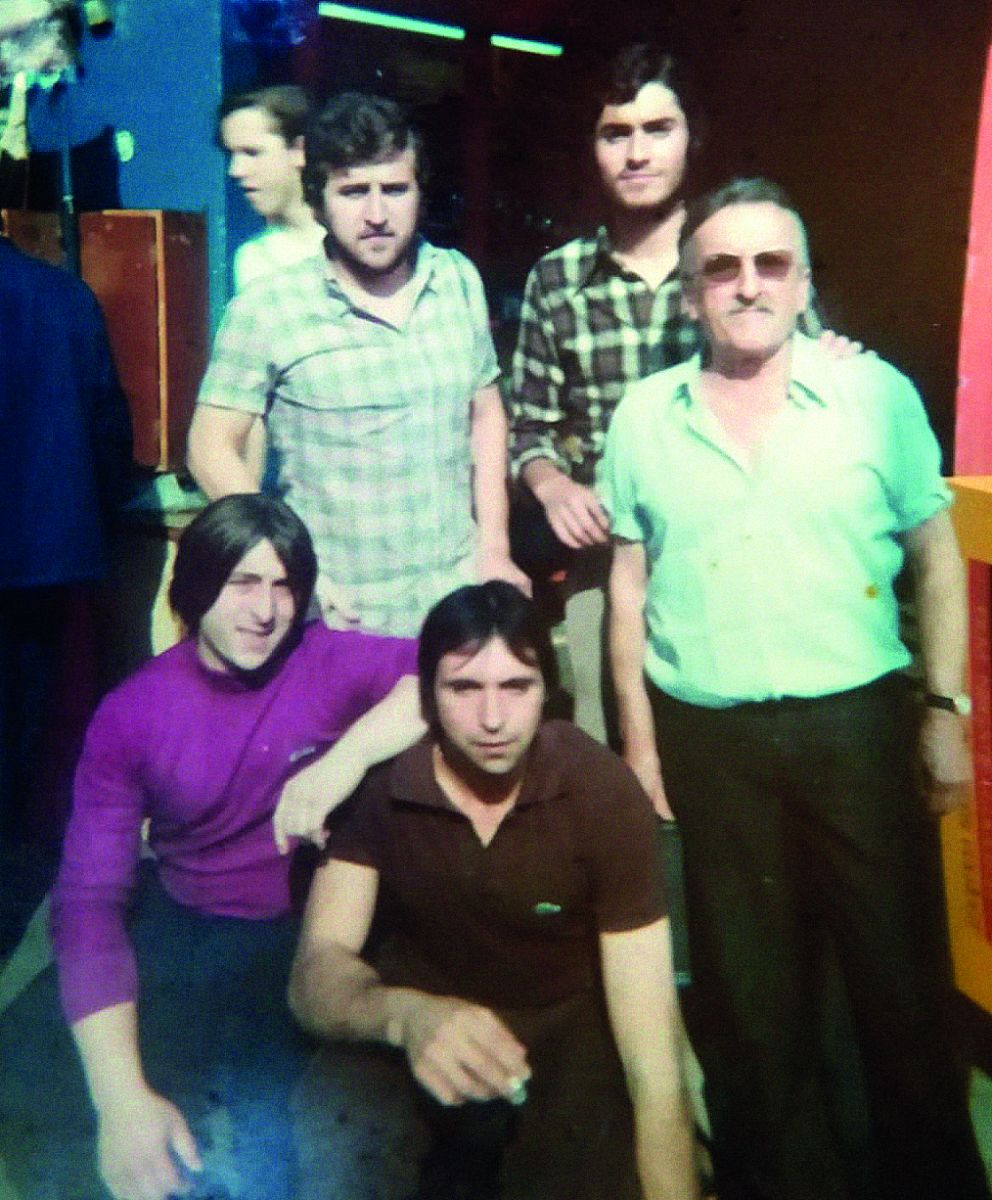
From there everything has been confusing. Citing the sources of the Hendaia Gendarmerie, El Diario Vasco published Hernández as a famous criminal. “It was a resounding lie, but the Donostian newspaper did not correct the information,” Egaña stresses. One of the main hypotheses is that Hernández witnessed an unexpected and ugly event, so she was kidnapped. Peru Larrañaga may have witnessed the murder of the refugee and was therefore eliminated. The family has never accepted the hypothesis and considers that the disappearance is linked 40 years earlier with the warlike affairs of Barcelona, “it would be the revenge of a Catalan bourgeois”. There are also those who believe it was a GAL error, which was mixed with someone, as happened with Segundo Marey. This is a very complicated case to explain everything in these lines of the report, but Egaña's book mentions in detail all the hypotheses with their strengths and weaknesses.

As you can see, little light and many hypotheses in most cases. Many researchers and family members believe that the key to resolving these cases may be the declassification of the secret documents of the Government of Spain. Egaña is more pessimistic, according to him, “as happened in the Transition”, because the cleaning in the files has been done. He relies more on the testimonies, “if there are, the witnesses must appear now, otherwise they will die.”
To continue searching and searching, that is the fate of the relatives of the disappeared, and many families continue to work on that. Consequently, from time to time, the theme has a presence in society. Perhaps the Naparra family is one of the most feared in this search, as we have seen recently in The History of a Wheel. But time doesn't happen in vain, and most of the time it does its job, forgetting or looping litigation, relatives are exhausted in search or die. From the point of view of justice, cases of enforced disappearance never prescribe and the criminal responsibilities of the authors have no expiration date. And, of course, justice is important for families, but above all, they want a clear end to research, and especially the body, or to know what has happened to it, for after the infinite years to make the ultimate grief and continue living in peace.
Mont de Marsanetik (Landak) gertuko harizti batean bilatu zituzten Jose Miguel Etxeberria Naparra-ren gorpuzkiak apirilaren 4an, baina ez zuten ezer aurkitu. Naparra han lurperatu zutela esan zuen estatu terrorismoari lotutako iturria bilatzeko agindua eman du orain Ismael... [+]
Jendarmeriaren talde espezializatu bat, Paco Etxeberria auzitegi-medikuak lagunduta eta epaileak aginduta, Jose Miguel Etxeberria Naparraren gorpuzkiak aurkitzen saiatuko da astearte goizean. Mont de Marsanetik (Landak) gertuko harizti batean egingo dute bilaketa, iturri... [+]
The burial of their dead is one of the ways to make peace with the past. Another, but in the long run less effective, is the forgetfulness of the past. But sometimes apologists forget the forgetfulness that everyone has to forget their unburied dead (or learn to forget them, or... [+]
Joxe Bernardo Bidaola Txirrita etakide tolosarraren desagertze eta heriotza ikertzen dituen liburua aurkeztu dute, egilearen opariz ARGIAk PDF formatuan hemen eskaintzen duena. Ander Lizarralde oñatiarrak bildu ditu 1976ko apirilaren 25ean Txirritarekin zihoazen lekukoen... [+]









